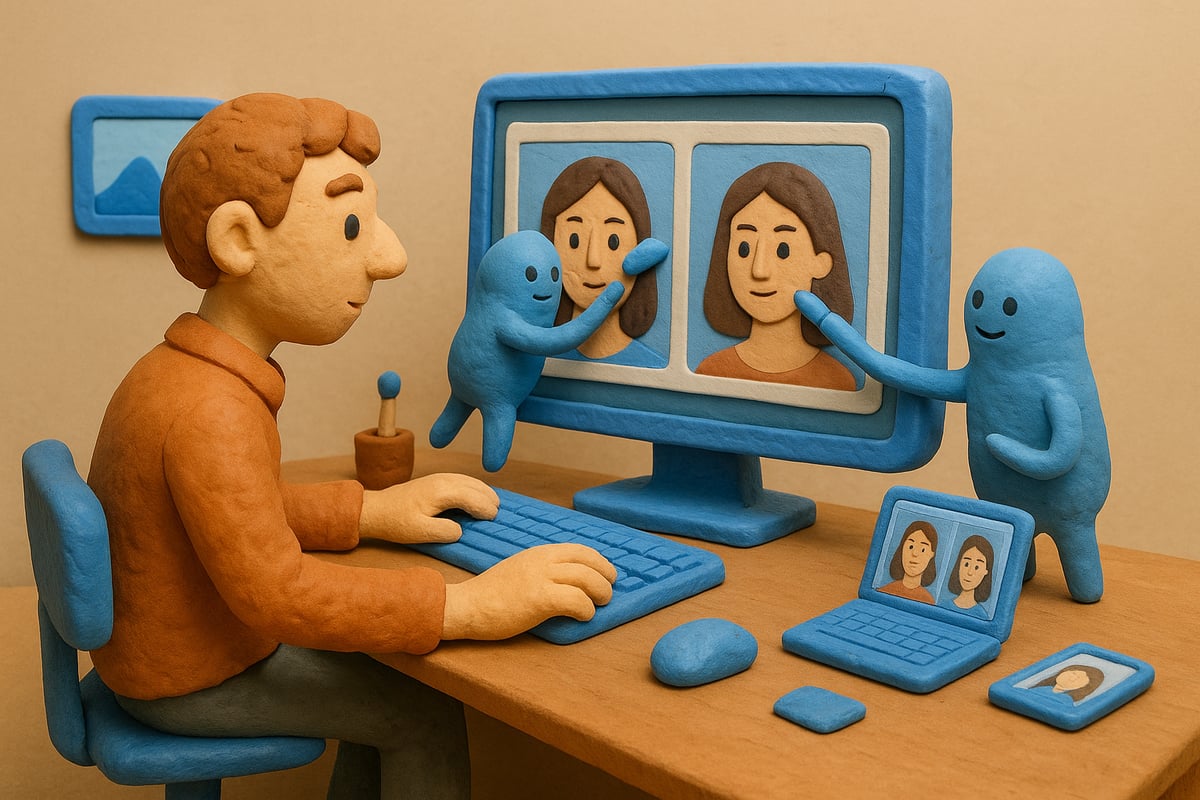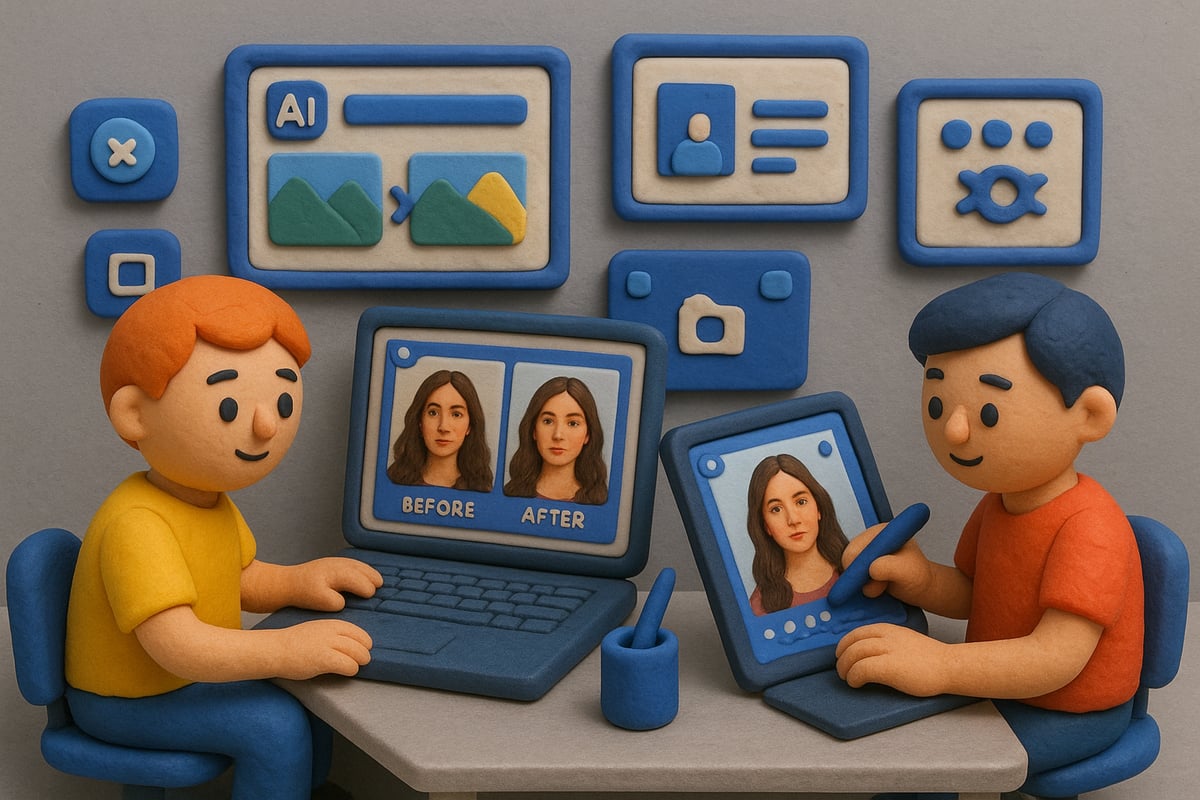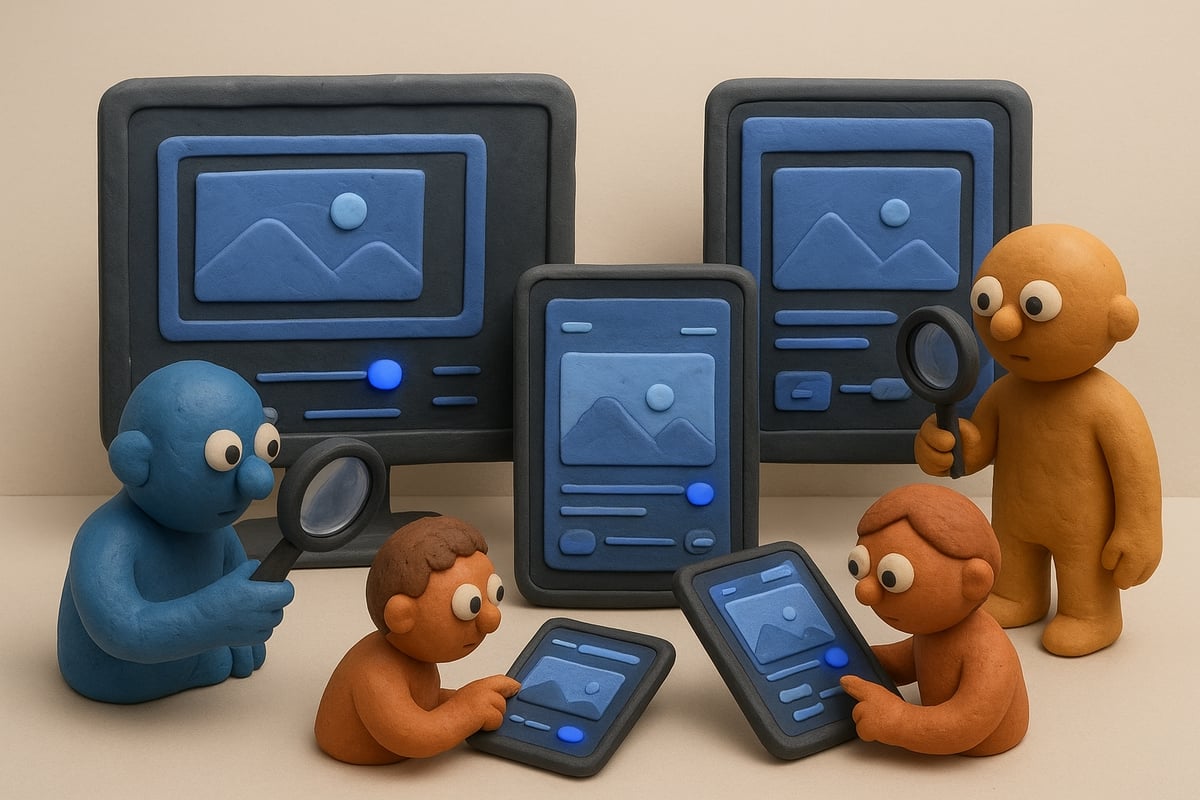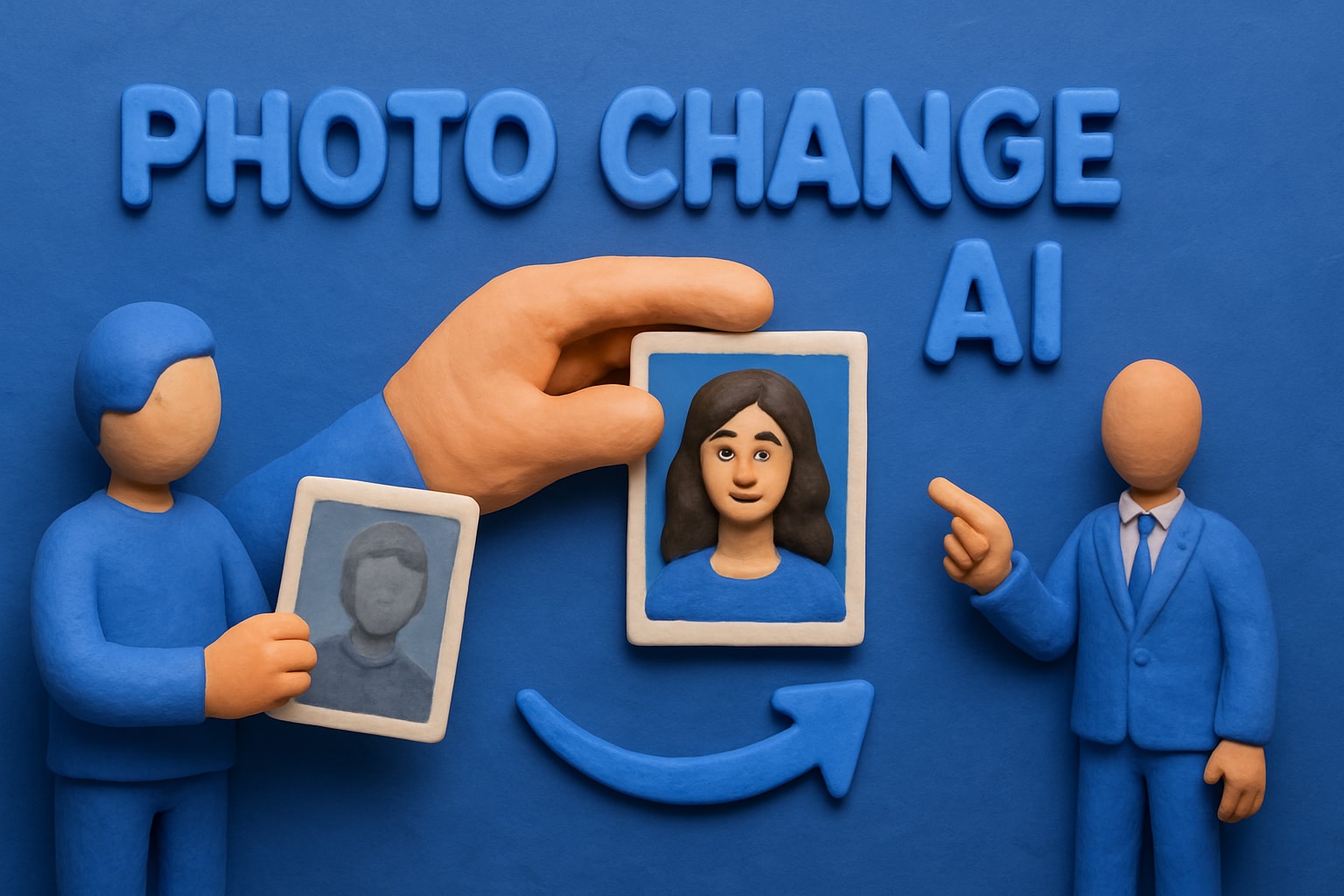Nov 1, 2025
Ai Edit Images Guide: Master Photo Editing With AI in 2025

Artificial intelligence is transforming how we approach photo editing, opening up possibilities that were unimaginable just a few years ago. In 2025, creative workflows are being redefined as AI edit images with greater speed, precision, and creativity.
This guide is designed to help you master the art of photo editing using cutting-edge AI tools and techniques. Whether you are a professional or a hobbyist, you will discover how to harness the full potential of AI for your projects.
Explore the fundamentals of AI photo editing, uncover must-have features, follow step-by-step editing workflows, learn how to choose the right tools, and gain advanced tips—all while considering important ethical implications. Ready to elevate your editing? Dive in and transform your creative process.
The Rise of AI in Photo Editing: 2025 Landscape
Artificial intelligence has rapidly transformed how we ai edit images, pushing creative possibilities forward at an unprecedented pace. Over the past decade, advancements in machine learning and computer vision have set the stage for a new era in photo editing. By 2025, AI-powered tools are not just enhancing photos but redefining what’s possible for creators everywhere.

The journey began with basic automated adjustments, such as noise reduction and color correction, driven by early AI algorithms. As research accelerated, breakthroughs in deep learning enabled AI to recognize objects, segment images, and even predict user intent. By the early 2020s, tools using neural networks allowed anyone to ai edit images with features like intelligent background removal and realistic upscaling.
Adoption surged as these capabilities matured. According to recent market research, the global AI image editor market is projected to grow from $7.77 billion in 2024 to over $66 billion by 2032. Professionals in photography, real estate, e-commerce, and design now rely on AI for faster, higher-quality results. Even hobbyists have embraced this technology, benefiting from intuitive interfaces and natural language prompts that let them ai edit images without steep learning curves.
Industries have felt the impact profoundly. In real estate, AI tools can instantly enhance property photos, remove unwanted objects, and adjust lighting to attract buyers. E-commerce brands use AI to standardize product images, apply consistent backgrounds, and upscale resolution for sharper listings. Social media influencers leverage AI filters and style transfer to create unique visual identities with minimal manual effort. Designers and artists experiment with AI-driven effects to push creative boundaries, often combining multiple AI models in a single workflow.
The outcomes are striking. AI-edited images now appear in advertising campaigns, online storefronts, and personal portfolios, often indistinguishable from those edited manually. To see real-world transformations, explore these AI-edited photos case studies that showcase before-and-after results across various industries. These examples highlight how easy it has become to ai edit images at scale, without sacrificing quality or artistic intent.
Comparing AI editing to traditional manual workflows reveals significant advantages. AI dramatically reduces editing time, automates repetitive tasks, and makes professional-quality results accessible to users of all skill levels. While manual editing still offers unmatched creative control for some projects, the ability to ai edit images in seconds has shifted expectations around speed and efficiency. Cost barriers have dropped as well, with many platforms offering affordable or even free tiers.
Despite these advances, concerns persist about AI replacing human creativity. However, the evidence suggests that AI acts as a powerful collaborator, not a replacement. It handles tedious adjustments, freeing artists to focus on vision and storytelling. When you ai edit images, you still make the creative decisions, guiding the technology to achieve your desired outcome. The partnership between human ingenuity and AI continues to fuel innovation in 2025, opening new doors for everyone involved in digital imaging.
Essential AI-Powered Features and Tools
Artificial intelligence has revolutionized the way professionals and hobbyists approach image editing. The latest ai edit images tools in 2025 offer a suite of powerful features that make photo enhancement faster, smarter, and more intuitive than ever before.

Must-Have AI Features for Image Editing
The cornerstone of modern ai edit images platforms lies in their essential features. Here are the most impactful capabilities available in 2025:
- Auto-Enhancement: Instantly adjusts color, brightness, and contrast for optimal results.
- Object Removal: Effortlessly erases unwanted elements, filling gaps with realistic content.
- Background Replacement: Swaps out backgrounds while preserving subject details.
- Colorization: Brings old or black-and-white photos to life with accurate, vibrant colors.
- Upscaling: Increases resolution and sharpness without losing quality.
- Artistic Filters: Applies creative styles, from classic art to modern effects, transforming the mood of any image.
Each of these features empowers users to ai edit images with speed and precision, reducing manual effort and unlocking new creative possibilities.
Real-World Impact and User Experience
Imagine restoring a faded family portrait with realistic colorization, or removing a photobomber from a vacation shot in seconds. AI-driven object removal can clean up real estate photos, while upscaling ensures every detail is crisp for e-commerce listings. These tools not only save time but also deliver consistent, professional results.
User interfaces have evolved to be more intuitive. Many ai edit images platforms now support natural language prompts, letting users type instructions like "make the sky more vibrant" or "remove the car from the left." This accessibility means both experts and beginners can achieve their vision with minimal learning curve.
Integration and Innovations in 2025
Popular platforms such as Adobe, Meta AI, and Canva have integrated advanced AI features directly into their workflows. Real-time editing allows users to preview changes instantly. Batch processing automates repetitive edits across hundreds of images, ideal for social media managers and product photographers. Context-aware adjustments ensure that enhancements adapt to the unique content of each photo, delivering tailored results.
In 2025, innovations like semantic editing—where AI understands image context—have further streamlined the ai edit images process. This makes it possible to apply nuanced changes, such as adjusting lighting based on scene type or recommending artistic styles that suit the subject matter.
Automation and Measurable Productivity Gains
For professionals, the ability to ai edit images at scale is a game changer. Automated workflows handle tasks like cropping, resizing, and watermarking, freeing up time for creative decision-making. Surveys show that users report up to a 40% increase in productivity and higher satisfaction rates thanks to AI-powered automation.
If you want to explore these tools in more depth or see practical examples, the AI photo editor online guide offers a comprehensive overview of current features and step-by-step instructions.
The rapid evolution of AI-powered tools is reshaping the landscape of digital image editing. With user-friendly interfaces, innovative features, and measurable improvements in workflow efficiency, ai edit images platforms are essential for anyone aiming to master photo editing in 2025.
Step-by-Step Guide: How to Edit Images with AI in 2025
Mastering how to ai edit images in 2025 is simpler than ever, thanks to intelligent platforms and intuitive workflows. Whether you are a professional or an enthusiast, following a structured process ensures optimal results and creative control. This guide walks you through each stage, offering practical advice and real-world insights.

Step 1: Selecting the Right Image
Begin with a high-resolution photo suited for your desired outcome. Consider the composition, lighting, and subject matter. Images with clear subjects and minimal background clutter work best for AI-driven enhancements. If you aim for creative transformations, choose images with vibrant colors or strong contrasts.
Step 2: Choosing an AI Editing Platform
Select a platform that matches your needs. Evaluate feature sets, interface simplicity, supported formats, and compatibility. Popular 2025 platforms like Weezard AI, Adobe, and Canva offer varying strengths. For advanced requirements, look for batch processing or natural language prompt capabilities. Comparing available options helps streamline how you ai edit images and guarantees the right fit for your workflow.
Step 3: Uploading Images: Formats, Privacy, and Security
Upload your chosen image in a supported file format such as JPEG, PNG, or TIFF. Always check privacy policies to ensure your data remains secure. Many platforms now offer encrypted uploads and clear retention policies. Prioritize services that are transparent about data usage, especially when you ai edit images containing sensitive content.
Step 4: Applying Basic AI Enhancements
Start by letting the AI analyze and enhance your photo. Most tools offer auto color correction, exposure adjustment, and sharpening. These features use machine learning to optimize your image instantly. Review the changes and toggle before-and-after views to ensure the edits align with your creative intent. The ai edit images process saves significant time compared to manual adjustments.
Step 5: Removing Unwanted Objects or Backgrounds
Use AI-powered object removal or background replacement tools to refine your composition. Simply highlight the area or select the object, and the AI will intelligently erase it, filling the space with realistic textures. This step is invaluable for real estate, e-commerce, or portrait photography. For detailed guidance, explore Online AI photo editing tips to perfect this process and enhance how you ai edit images for professional results.
Step 6: Adding Creative Effects and Artistic Transformations
Leverage AI features like style transfer, artistic filters, or colorization to elevate your images. Experiment with different effects to match your vision. Many platforms allow you to preview several styles instantly, making it easy to find the right look. When you ai edit images for social media or design, creative tools help your content stand out.
Step 7: Batch Processing and Automating Repetitive Edits
If you work with multiple images, utilize batch processing. AI can apply consistent enhancements, object removal, or effects to entire folders. This automation boosts productivity for professionals managing high-volume projects. Make sure to review a sample output before processing the full batch, ensuring the ai edit images process maintains quality across all files.
Step 8: Reviewing, Refining, and Exporting
After editing, carefully review each image. Use zoom and comparison tools to spot artifacts or inconsistencies. Fine-tune settings if needed, then export your images in the desired format and resolution. Prioritize lossless formats if you plan further edits, or compressed formats for web use. The final step in how you ai edit images is ensuring your exported files meet project requirements and visual standards.
Tips for Maximizing Quality and Troubleshooting
- Always work on a duplicate to preserve the original.
- Adjust AI settings incrementally for subtle results.
- Use manual tools to refine AI edits if automated results are too aggressive.
- If you notice artifacts or over-editing, revert to previous steps or use the platform’s history panel.
- Consult platform-specific resources or community forums for troubleshooting advice.
Maintaining Creative Control
While AI automates many steps, your vision guides the process. Experiment with different tools and settings, blending automation with personal touch. The most successful workflows for ai edit images combine efficiency with creativity.
By following this workflow, you can harness the full potential of AI for image editing in 2025. The combination of advanced features, user-friendly design, and automation empowers you to achieve professional, eye-catching results in less time.
Choosing the Best AI Image Editing Tools in 2025
Selecting the right platform for ai edit images is more crucial than ever. With the market expanding rapidly and new features emerging each year, the right tool can transform your creative process. According to recent AI Image Editor Market Growth data, adoption rates for AI-driven editing solutions have surged, making it essential to understand how to choose the best fit for your needs.

What to Look for in an AI Editing Tool
When evaluating ai edit images platforms, focus on several key factors. Features such as automatic enhancement, object removal, and batch processing are now standard. Ease of use is vital, especially if you are new to AI-powered editing. Consider output quality, as top platforms deliver high-resolution, artifact-free results. Pricing models vary, with options for subscriptions, pay-per-edit, or free trials. Responsive customer support can make a big difference if you run into issues while using ai edit images tools.
Comparing Leading AI Image Editors
Below is a table summarizing top contenders for ai edit images, highlighting their strengths and target users:
| Platform | Key Features | Best For | Pricing |
|---|---|---|---|
| Weezard AI | Restoration, batch edits, natural prompts | Businesses, Pros | Flexible, Free trial |
| Adobe AI | Deep learning, pro integration | Designers, Pros | Subscription |
| Canva AI | Templates, instant edits, web-based | Beginners, Teams | Freemium |
| Meta AI | Social-ready, mobile focus | Influencers, Creators | Free |
This comparison can help narrow down the right ai edit images solution based on your workflow, budget, and desired features.
Industry Use Cases, Platform Types, and Integration
Different sectors require tailored ai edit images solutions. Real estate and e-commerce professionals often need batch processing and background replacement. For photographers, seamless integration with existing creative software is a priority. Mobile apps offer flexibility for on-the-go edits, while desktop or web-based platforms provide advanced controls. Compatibility with cloud storage and export formats should also be considered when comparing ai edit images platforms.
User Satisfaction and Recommendations
User reviews and industry ratings reveal high satisfaction rates for platforms that combine intuitive interfaces with robust AI capabilities. Many users report significant time savings and improved creative outcomes. For beginners, Canva AI and Meta AI are ideal starting points. Professionals may benefit from Weezard AI’s advanced features and Adobe’s integration with creative suites. Businesses should look for scalable solutions with strong batch processing and data security. Ultimately, the best ai edit images tool in 2025 is the one that aligns with your unique creative goals and workflow.
Advanced AI Editing Techniques and Pro Tips
Unlocking the full power of ai edit images in 2025 means moving beyond basic enhancements. Advanced AI editing techniques give creators new levels of control, efficiency, and artistic freedom. From subtle portrait retouching to bold generative art, AI is reshaping what is possible in digital imaging.
Advanced Retouching and Content-Aware Tools
Modern AI algorithms excel at intelligent retouching. With facial recognition, ai edit images tools can smooth skin, enhance eyes, and adjust lighting, all while preserving natural texture. Content-aware fills let users remove distractions with a single click, filling gaps seamlessly.
For example, AI-powered object removal tools now recognize complex background patterns and reconstruct missing areas with remarkable accuracy. These features save countless hours for both professionals and hobbyists.
Creative Applications: Animation, 3D, and Generative Art
The creative potential of ai edit images extends far beyond static photos. AI can animate portraits, turning a single image into expressive videos. 3D rendering tools let users create depth maps or transform photos into sculpted objects, opening new avenues for product design and advertising.
Generative AI models can restyle images in the manner of famous artists or synthesize entirely new scenes. This empowers creators to experiment with bold visual styles while maintaining full control over the editing process.
Workflow Automation and Layered Editing
Efficiency is essential, especially for high-volume projects. AI batch processing enables users to apply consistent edits across hundreds of images in minutes. Automated workflows can handle resizing, color correction, and watermarking, freeing up time for creative decisions.
Combining multiple ai edit images tools allows for layered effects. For instance, an editor might use AI upscaling, then apply artistic filters, and finally remove unwanted objects, all within a streamlined pipeline. This modular approach maximizes both flexibility and output quality.
Authenticity, Over-Processing, and Best Practices
While AI makes editing easier, maintaining authenticity is crucial. Over-editing can result in unnatural images or loss of original detail. Experts recommend reviewing changes at each stage and toggling before-after views to ensure edits enhance rather than overpower.
A useful tip is to set clear objectives for each project. Is the goal subtle enhancement or bold transformation? Keeping intent in focus helps guide the use of ai edit images tools responsibly.
Insights from Professionals and Continuous Learning
According to recent industry surveys, professionals report higher satisfaction and improved work-life balance thanks to AI. In fact, a 2025 survey on AI's impact on photography revealed that clients rarely notice a difference between AI-edited and manually edited images, reducing stress for many editors.
To stay ahead, invest time in learning about new ai edit images features. Follow reputable sources, participate in workshops, and experiment with emerging tools. The AI landscape evolves quickly, and continuous learning ensures you can leverage each breakthrough to its full potential.
Ethics, Privacy, and Responsible Use of AI Image Editing
As ai edit images technology continues to expand, ethical, privacy, and responsible use issues have become central concerns for creators, businesses, and users alike. The ability to manipulate photos with AI raises questions about authenticity, consent, and the potential for misuse.
One significant ethical challenge is the rise of deepfakes and misinformation. AI-powered tools can convincingly alter reality, making it difficult to distinguish between genuine and manipulated images. This has implications in journalism, social media, and even legal contexts. According to Ethical Concerns in AI Image Generation, issues like copyright, bias, and potential for harmful use must be addressed through industry guidelines and transparent practices.
Privacy is another crucial aspect of ai edit images platforms. Uploading personal or sensitive photos to AI systems raises questions about data storage, user consent, and potential misuse. Most leading platforms now require explicit user consent and clearly outline their data usage policies. Consider the following table summarizing privacy features in top AI editing tools:
| Platform | Data Storage | Consent Required | Image Retention Policy |
|---|---|---|---|
| Platform A | Cloud | Yes | 30 days |
| Platform B | Local/Cloud | Yes | Immediate deletion |
| Platform C | Cloud | Yes | User controlled |
Responsibility also means acknowledging and addressing bias in ai edit images. Research such as the Debiasing AI-Generated Images Study demonstrates ongoing efforts to reduce stereotypes and ensure fair representation in AI outputs. Transparent labeling, such as watermarks or tags indicating "AI-edited," can help maintain trust with viewers.
To use ai edit images tools responsibly, follow these best practices:
- Always obtain consent before uploading or sharing someone else’s image.
- Clearly label AI-generated or edited content.
- Stay informed about platform policies and industry standards.
- Regularly review privacy settings and data retention policies.
- Report and avoid sharing misleading or harmful content.
By prioritizing ethics, privacy, and responsible use, creators and organizations can harness the transformative power of ai edit images without compromising trust or integrity.
Now that you have a clear understanding of how AI is revolutionizing image editing in 2025 and have explored expert workflows and practical tips, you're well equipped to take your projects to the next level. Whether you're looking to enhance photos for business or unleash your creativity, modern platforms like Weezard AI make it easier than ever to achieve professional results with efficiency and precision. If you're ready to transform your images and experience the future of editing firsthand, it's the perfect time to see what advanced AI can do for you.
Make magic!
Ready to jump in?
Experience the power of AI-driven image editing with Weezard AI. Professional results in seconds.

